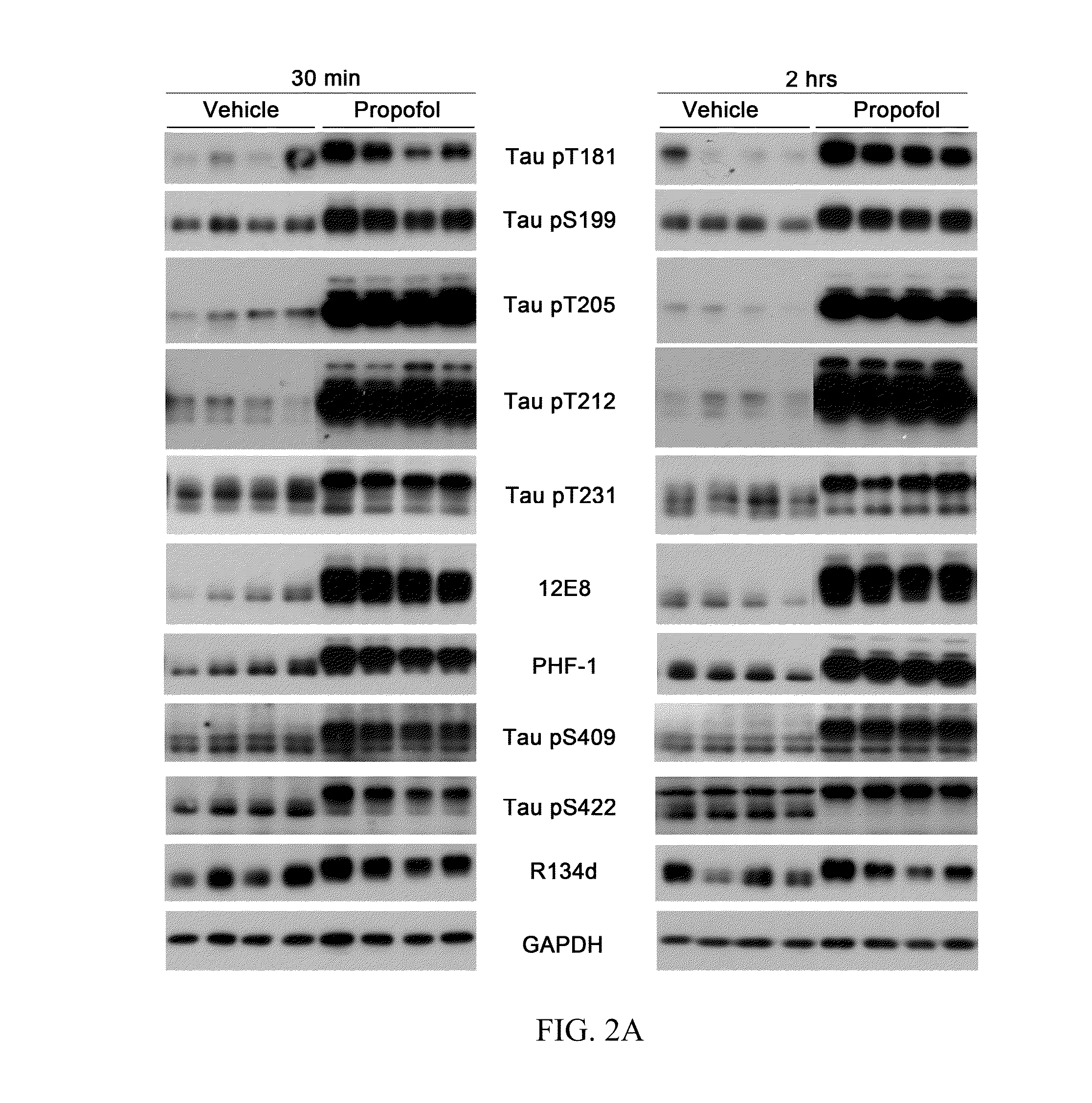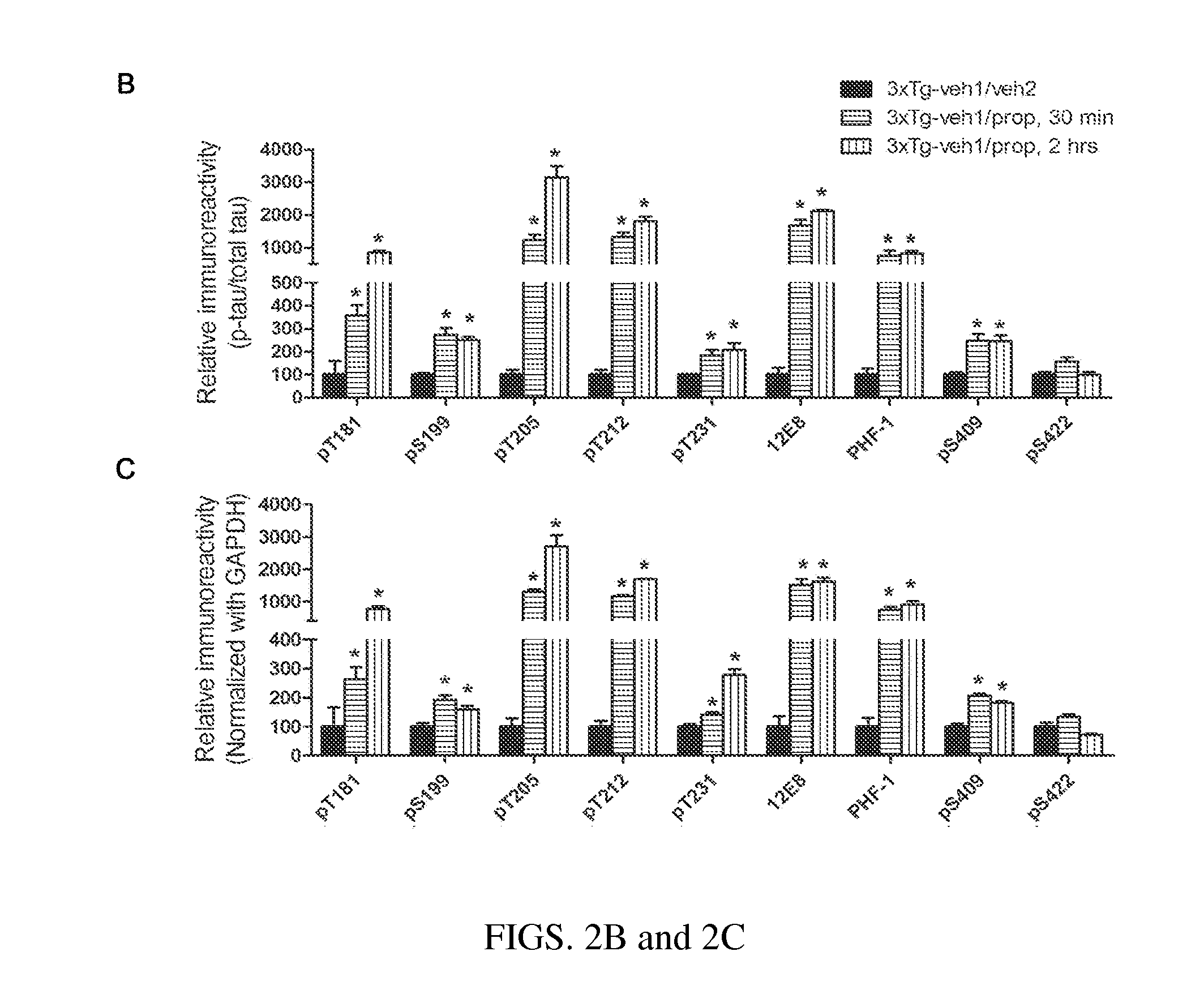Intranasal insulin administration for the prevention of anesthesia-induced tau pathology/tauopathies
an anesthesia-induced tau pathology and insulin administration technology, applied in the field of intranasal insulin administration, can solve the problems of loss of microtubule assembly promoting and stabilizing protein function, gain of toxic function, and disruption of microtubules
- Summary
- Abstract
- Description
- Claims
- Application Information
AI Technical Summary
Benefits of technology
Problems solved by technology
Method used
Image
Examples
example 1
[0030]In an exemplary study, 3xTg-AD mice, a commonly used transgenic model of AD and tauopathy, which harbors three mutated transgenes (human PS1M146V, APPSWE, and tauP301L), were treated with propofol, a commonly used intravenous anesthetic in clinical practice. The effects of intranasal insulin on propofol-induced hyperphosphorylation of tau were then investigated. Insulin was found to attenuate propofol-induced hyperphosphorylation of tau, which may occur mainly through up-regulation of protein phosphatase 2A (PP2A) and down-regulation of several tau protein kinases.
Materials and Methods
Antibodies and Reagents
[0031]Peroxidase-conjugated anti-mouse and anti-rabbit IgG were obtained from Jackson ImmunoResearch Laboratories (West Grove, Pa., USA). The enhanced chemiluminescence (ECL) kit was from Pierce (Rockford, Ill., USA). The ABC staining system was from Santa Cruz Biotechnology (Santa Cruz, Calif., USA). Propofol was purchased from MP Biomedicals (Solon, Ohio, USA). Insulin (H...
example 2
[0048]In another experiment to investigate whether intranasal administration can prevent anesthesia-induced cognitive impairment, we treated old (age of 17-18 months) wild type mice with daily intranasal administration of insulin (1.75 IU / mouse / day) for seven consecutive days before anesthesia induced with intraperitoneal injection of propofol (150 mg / kg) followed by sevoflurane (2.5%) inhalation for one hour. This paradigm of anesthesia is similar to that used clinically for surgical patents in the U.S. The cognitive function of the mice was assessed starting on the next day by using the Morris water maze (MWM) test, a widely used cognitive test for rodents.
[0049]Learning curves of mice in the MWM is a standard way to demonstrate their spatial learning ability. As shown in FIG. 8A, the control mice (no insulin or anesthesia) showed normal learning, as evidenced by continuous decrease in the time needed to reach the escape platform during the four training days in water maze. Mice a...
PUM
| Property | Measurement | Unit |
|---|---|---|
| concentrations | aaaaa | aaaaa |
| concentrations | aaaaa | aaaaa |
| temperature | aaaaa | aaaaa |
Abstract
Description
Claims
Application Information
 Login to View More
Login to View More - R&D
- Intellectual Property
- Life Sciences
- Materials
- Tech Scout
- Unparalleled Data Quality
- Higher Quality Content
- 60% Fewer Hallucinations
Browse by: Latest US Patents, China's latest patents, Technical Efficacy Thesaurus, Application Domain, Technology Topic, Popular Technical Reports.
© 2025 PatSnap. All rights reserved.Legal|Privacy policy|Modern Slavery Act Transparency Statement|Sitemap|About US| Contact US: help@patsnap.com



